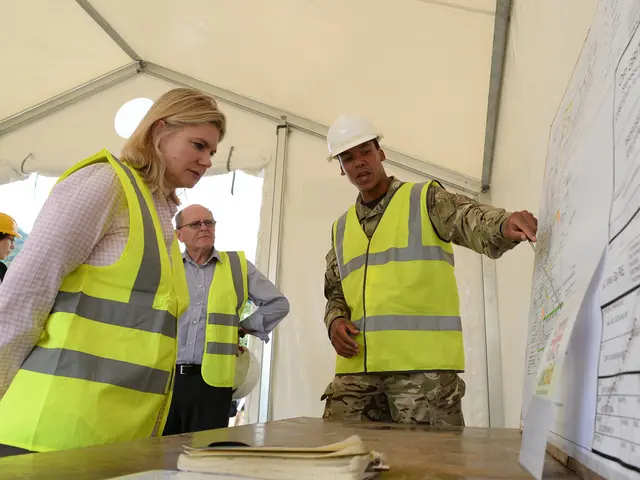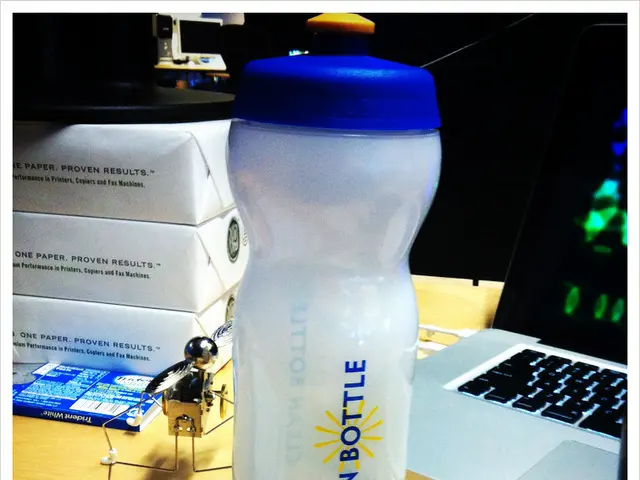NASA Requires Lunar-Resistant Gloves and Footwear to Endure Freezing Moon Temperatures
NASA Prepares for Lunar Missions with Enhanced Cold-Weather Spacesuits
NASA's upcoming missions to the Moon's permanently shadowed regions at the South Pole will present astronauts with a colder environments than the Apollo program. To ensure the safety and comfort of its astronauts, NASA engineers are conducting tests on the fabric of next-generation spacesuits in a large cryogenic chamber at the agency's Jet Propulsion Laboratory. The chamber, called CITADEL, was previously used for testing robot parts for non-crewed missions to icy moons but is now being utilized for preparing humanity's return to the Moon.
The 4-foot tall and 5-foot wide CITADEL uses compressed helium to reach temperatures as low as -370 Fahrenheit (-223 Celsius), making it one of the coldest chambers in the world. To maintain its chilled vacuum state, the chamber is equipped with four load locks, through which test materials can be inserted without disrupting the temperature. The chamber takes several days to reach the desired temperatures and, if opened prematurely, restarts the entire process. CITADEL is also equipped with a robotic arm to grab test materials and cameras to capture the testing process.
For simulations of Moon missions, the team will add abrasion testing and lunar regolith-like material to the chamber, as well as aluminum blocks to simulate tools that the astronauts might grab. This is crucial to ensuring the gloves and boots can withstand prolonged contact with cold surfaces and tools, which could pose risks to astronauts exploring the harsh environs of the lunar South Pole.
Currently, the team is focusing on testing the gloves and boots for thermal protection. NASA previously used its astronauts for thermal testing, making them insert their gloved hands inside a chilled glove box and hold onto frigid objects until their skin temperatures dropped. However, NASA now uses a custom-built manikin hand and foot for testing inside CITADEL. The manikin's extremities are fitted with a system of fluid loops to mimic the flow of warm blood through appendages, and dozens of temperature and heat flux sensors collect data from inside the gloves and boots.
For the upcoming Artemis 3 mission, set to launch in 2027, astronauts will wear new spacesuits designed for lunar exploration, including missions to the South Pole. These suits, known as AxEMU, are being developed by Axiom Space and feature a white exterior that reflects heat, helping to maintain a stable internal temperature and prevent overheating. The suits also include a life-sustaining backpack system that supports thermal management and life support functions.
While the AxEMU itself is primarily tested in other facilities, CITADEL is being used to evaluate the performance of gloves and boots for lunar missions. NASA hopes to identify the limits of the current hardware through testing and develop criteria for future spacesuit designs. Results from the testing on the gloves have not been favorable, with the current model proving inadequate for thermal requirements in the lunar South Pole. Results from the testing on the boots have yet to be analyzed.
The lunar South Pole is of interest to scientists as it may contain water ice in permanently shadowed regions. However, the extreme temperatures and areas where the Sun's light does not reach present challenges for astronauts. The Artemis astronauts will spend around two hours at a time inside craters containing ice deposits, where temperatures can reach a chilling -414 degrees Fahrenheit (-248 degrees Celsius), according to NASA. Hopefully, the new spacesuits can provide the necessary protection for astronauts to explore these mysterious regions of the Moon.
- NASA's focus on testing the thermal protection of spacesuits for lunar missions extends to health-and-wellness, aiming to protect astronauts from the harsh environments at the Moon's South Pole.
- The testing process in CITADEL, a large cryogenic chamber at NASA's Jet Propulsion Laboratory, simulates the cold temperatures astronauts will encounter during missions to the lunar South Pole, reaching as low as -370 Fahrenheit (-223 Celsius).
- In collaborating with Axiom Space to develop new spacesuits for lunar exploration, NASA's goal is not only to ensure safety but also to utilize technology to mitigate challenges presented by the extreme cold of the lunar South Pole, as seen in the AxEMU's white exterior that reflects heat.
- The outcome of the tests conducted on the gloves and boots within CITADEL will prove instrumental in shaping the future of spacesuit designs, enabling astronauts to further pursue scientific research in space, technology, and science, particularly in the exploration of the lunar South Pole for health-and-wellness and space-and-astronomy purposes.






